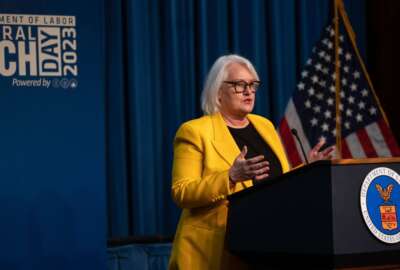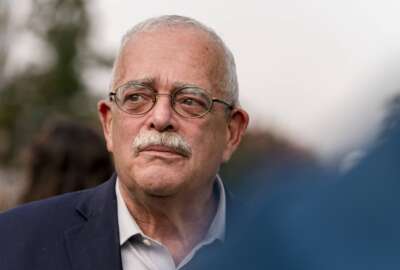Inside the Reporter’s Notebook is a biweekly dispatch of news and information you may have missed or that slipped through the cracks at conferences, hearings and other events. This is not a column or commentary – it’s news tidbits, strongly-sourced buzz, and other items of interest that have happened or are happening in the federal IT and acquisition communities.
As always, we encourage you to submit ideas, suggestions and, of course, news to Jason via email.
Be the first to know when a new Inside the Reporter’s Notebook is posted. Sign up today for our new Reporter’s Notebook email alert.
The General Services Administration’s much ballyhooed 18F organization rolled out a new service, cloud.gov, earlier this month.
While there was some initial confusion of what cloud.gov exactly is, an 18F spokesman confirmed that cloud.gov is an platform-as-a-service based on the open source technology called Cloud Foundry.
Cloud Foundry is a not-for-profit supported by a who’s who of private sector technology companies, such as IBM, VMWare, Intel, EMC and many more. The organization’s website says, “Cloud Foundry is an open standard for cloud applications. It is open source, multi-cloud, and multi-vendor. It is hardened production infrastructure for global enterprises. It is designed to make dev/ops the normal state of computing. It is built for fast-cycle innovation of cloud applications. For business, this means faster speed to market and higher rates of user adoption. For development, it means scalable microservices and continuous deployment. For operations, it means faster cycle time and higher reliability. For everyone, open source means no vendor lock-in.”
Read more
LaVerne Council is on a mission to change the tone and tenor of the Veterans Affairs Department’s struggle with cybersecurity.
First, the VA chief information officer since July ordered a review and analysis of why the department has struggled for so long with cybersecurity. And then, Council, who spent her career in the private sector, created a plan to address current weaknesses and new threats.
Council delivered that plan to Congress on Sept. 28 and now is moving out on implementing it.
My colleague Nicole Ogrysko detailed Council’s plan in her story from Oct. 16. It includes eight cyber domain areas, including risk management, security architecture and medical cybersecurity.
But maybe the biggest difference is Council is trying to repair VA’s relationship with the House and Senate oversight committees and the agency’s inspector general.
Read more
The request for proposals for the next generation telecommunications services arrived as promised by the General Services Administration on Oct. 16. What GSA hopes now happens is a growing list of vendors are taking a deep dive into the solicitation to see how well the agency listened and incorporated lessons learned from the arduous Networx contract. The transition to Networx from FTS-2001 lasted 33 months longer than initially expected and cost the government about $400 million more than it budgeted for.
Over the last year or so, GSA has hit all the right notes with industry and agency customers—asking and listening to how best to develop the main contract called Enterprise Infrastructure Solutions (EIS) under the Network Services 2020 (NS2020) umbrella. EIS is a 15-year contract with a ceiling of $50 billion.
Two of the main points of contention were the need for more competition and to make the contract easier to use.
We may not know if they’ve met those goals for several years as the current Networx contract doesn’t expire until 2020 and transition is set to begin in 2017.
Read more
Maybe it’s a sign of the times or a case of reading the handwriting on the wall, but the announced departures of two senior IT executives from the Defense Department and the Veterans Affairs Department, respectively, are further examples of the steady turnover that’s happening across the government.
Ron Jost, DoD’s deputy assistant secretary of Defense for command, control, communications, cyber and business systems, confirmed through a DoD spokeswoman that he is retiring.
Jost said he plans to continue to support DoD after he leaves the government. He offered no timeline for his departure nor did the spokeswoman provide who would be replacing Jost event on an interim basis.
He joined DoD in 2003 after spending the previous 26 years with Motorola.
During his tenure, Jost oversaw warfighting communications, command, control and cyberspace capabilities. He also led the effort to support non-intelligence space systems.
Read more
Copyright
© 2024 Federal News Network. All rights reserved. This website is not intended for users located within the European Economic Area.





